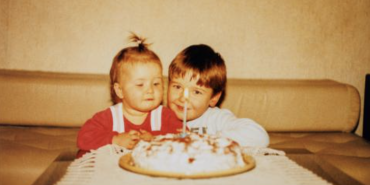The Trampled Gift

Christmas for me is "the best of times and the worst of times," to borrow a Charles Dickens expression.
One December several years ago my wife and I were disappointed that our two daughters and their families could not come home for the holidays. Instead of wallowing in self-pity we volunteered to help cook and serve Christmas dinner to the homeless at the Nazarene-operated Kansas City Rescue Mission. On Christmas morning we drove from our suburban home to the inner city mission and worked hard all day. Arriving home late at night and too tired to sleep, we felt we had celebrated Christ's birth in a manner pleasing to him.
We're older now, and we usually spend Christmas day surrounded by children and grandchildren, feasting together, exchanging gifts around the tree, and singing carols around the piano. It is the best of times. But at unexpected intervals during the day my mind returns to that Christmas we spent serving the hungry and homeless. I think: "That was the very best of times," and I seem to hear a Voice saying: "Whatever you did not do for one of the least of these, you did not do for me" (Matthew 25:45). Then I think of the clouds of commercialism and consumerism that threaten to eclipse the Star that was given to guide the Magi (and us) to the Christ, and I surmise: "It is the worst of times."
As I think of our society's attitude towards Christmas, a story comes to mind, though the media apparently did not consider the event very newsworthy. The evening news on TV carried several other sensational stories of murder and robbery. The newspaper buried the story on page 5. What had happened? In a large department store, in one of the busiest malls, a dead man was found beneath a rack of clothing. His body was discovered by a custodian who was sweeping the aisles before the store opened for the day.
The day before, the store had held a huge pre-Christmas sale. The store had gone all-out to advertise the drastically reduced prices. People had scurried around, pushing and shoving each other, trying to snatch bargains. Many carried lists of items to buy for Mom and Dad, Grandma, Uncle Harry, and Cousin Martha.
Most purchases were for family or friends from whom the givers would also receive a gift in return.
Hardly anything was bought for the needy or the homeless.
Everyone was in a hurry. Patience wore thin and folks became irritable. People were so thick in the aisles that it was difficult to move.
Many customers could hardly see where they were going because their arms were piled so high with purchases. Discarded paper and clothes accumulated on the floor, and folks just stepped over them and hurried along on their shopping sprees. No one knew if the dead body had been kicked under the rack of clothes, or if the man had crawled there before he expired, in order to get out of the way. But shoeprints on his clothing indicated that he might have been trampled on while lying in the aisle. The police found no identification on him. His fingerprints were not on file.
The coroner found a salty residue on each cheek indicating that the man was weeping before he died. He found a huge scar in the man's side, as well as small pricks in a circle around his head that might have been made by sharp pins, or perhaps large thorns. And deep scars ran all the way through the palms of his hands, as if nails had once been driven through them.
What have we done to Christmas?
Rob L. Staples is emeritus professor of theology at Nazarene Theological Seminary.
Holiness Today, November/December 2005
Please note: This article was originally published in 2005. All facts, figures, and titles were accurate to the best of our knowledge at that time but may have since changed.




